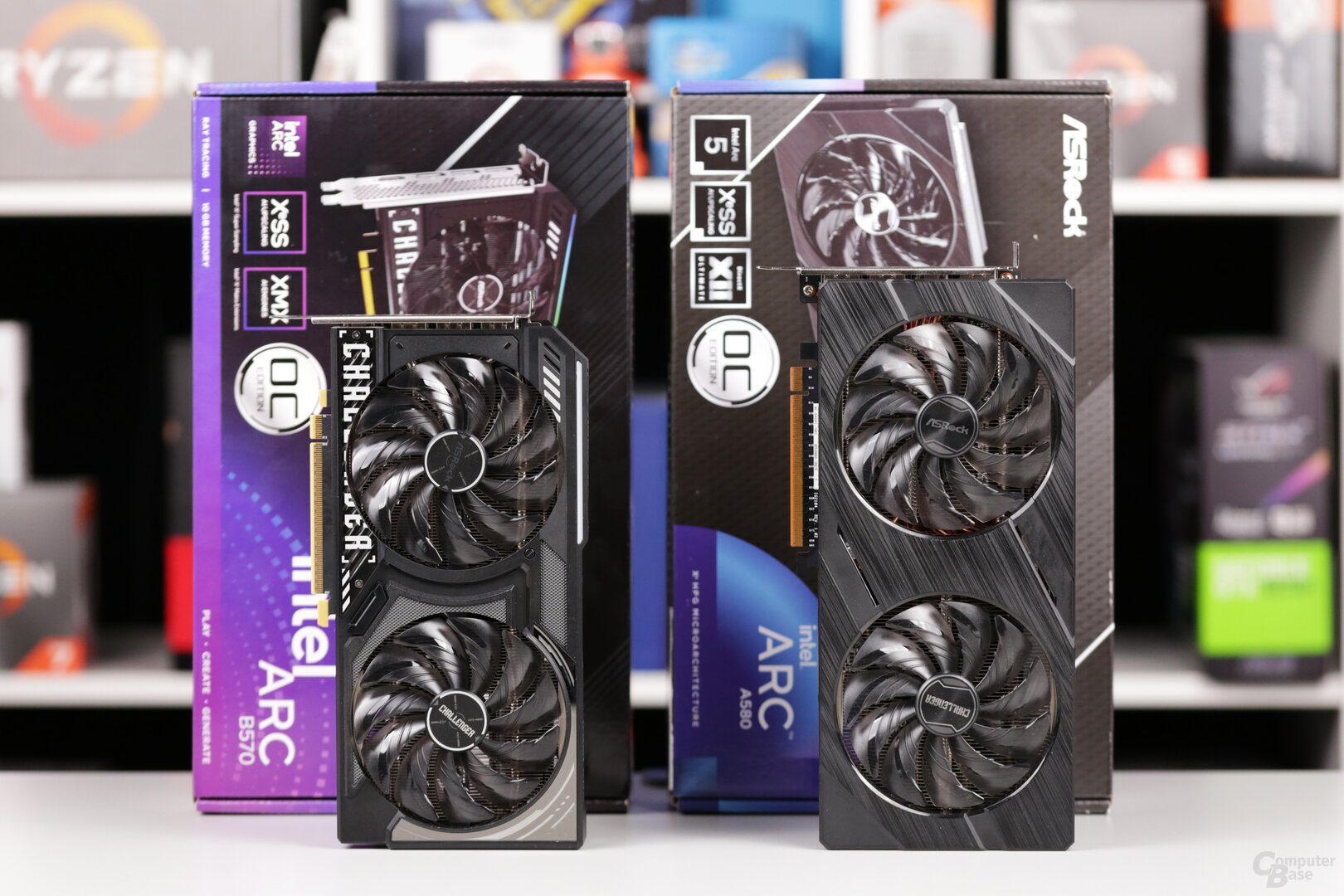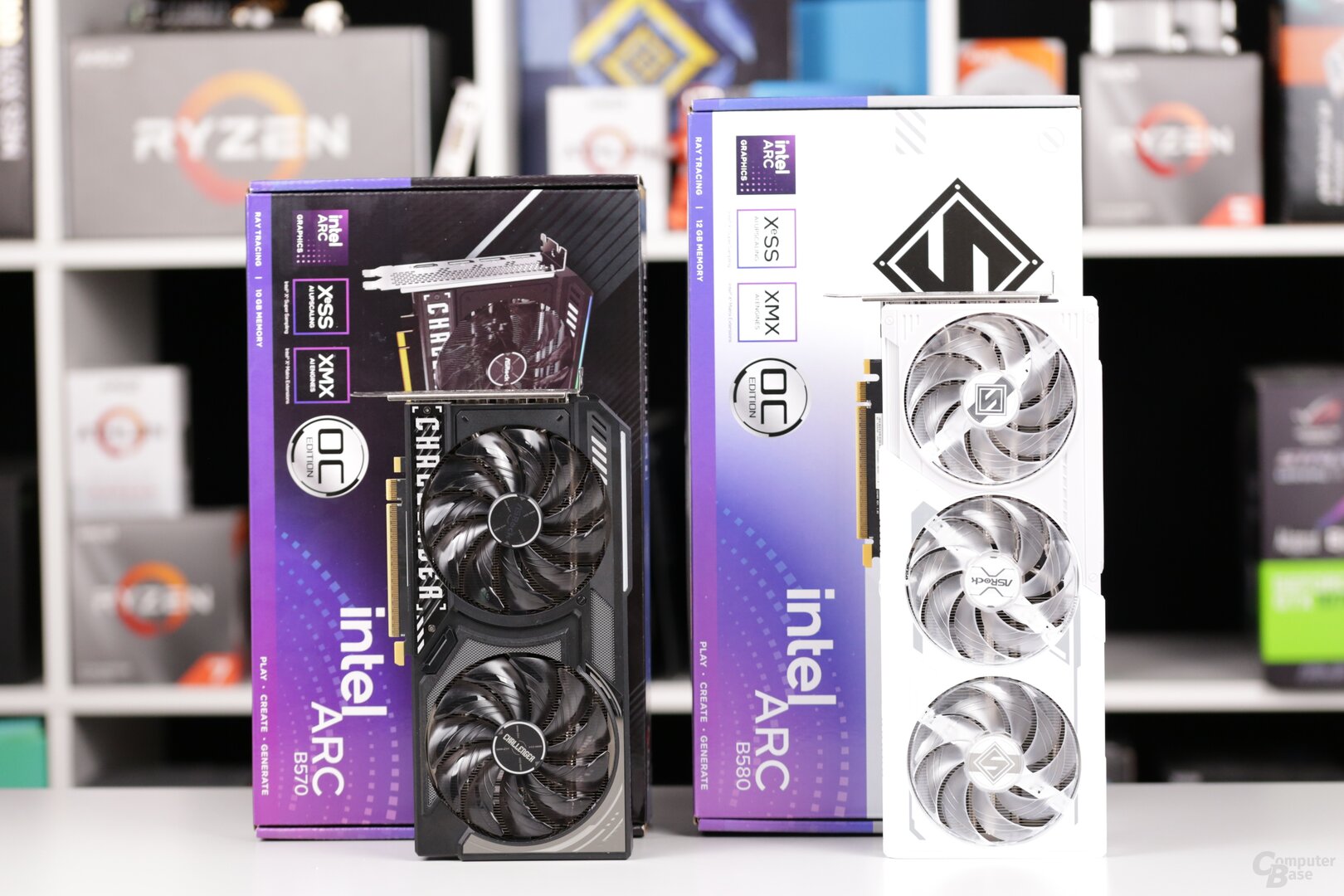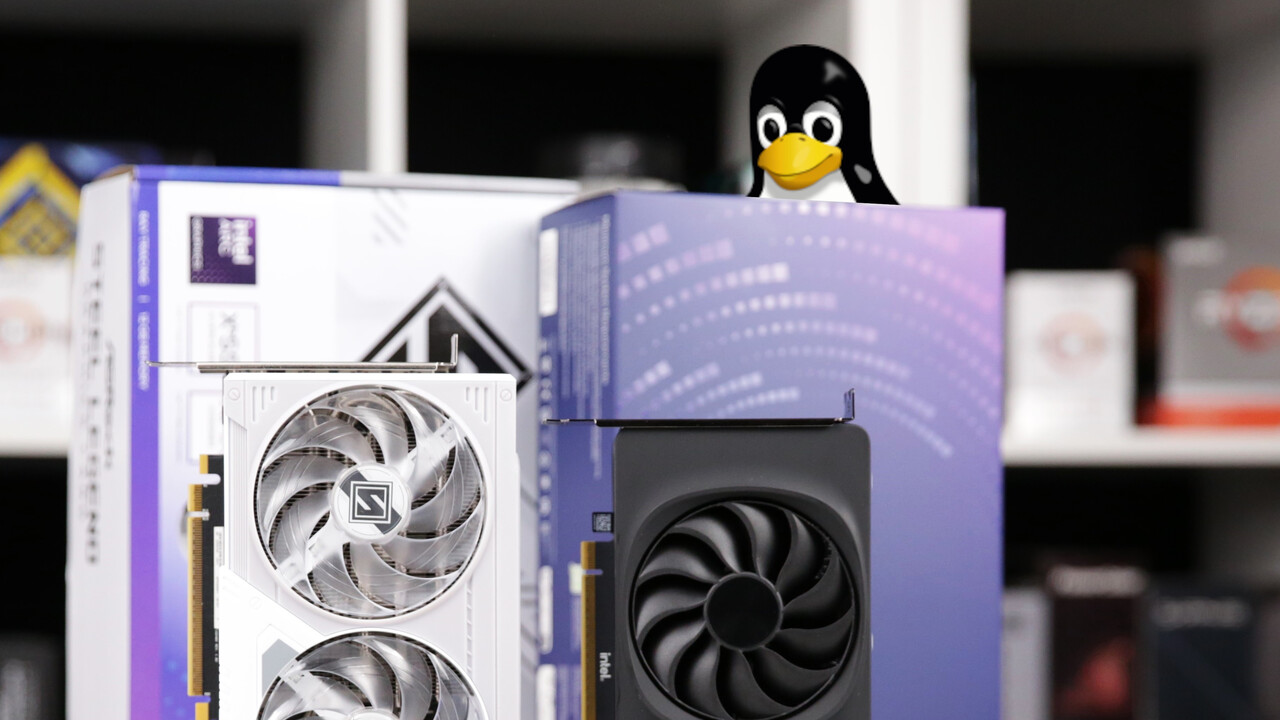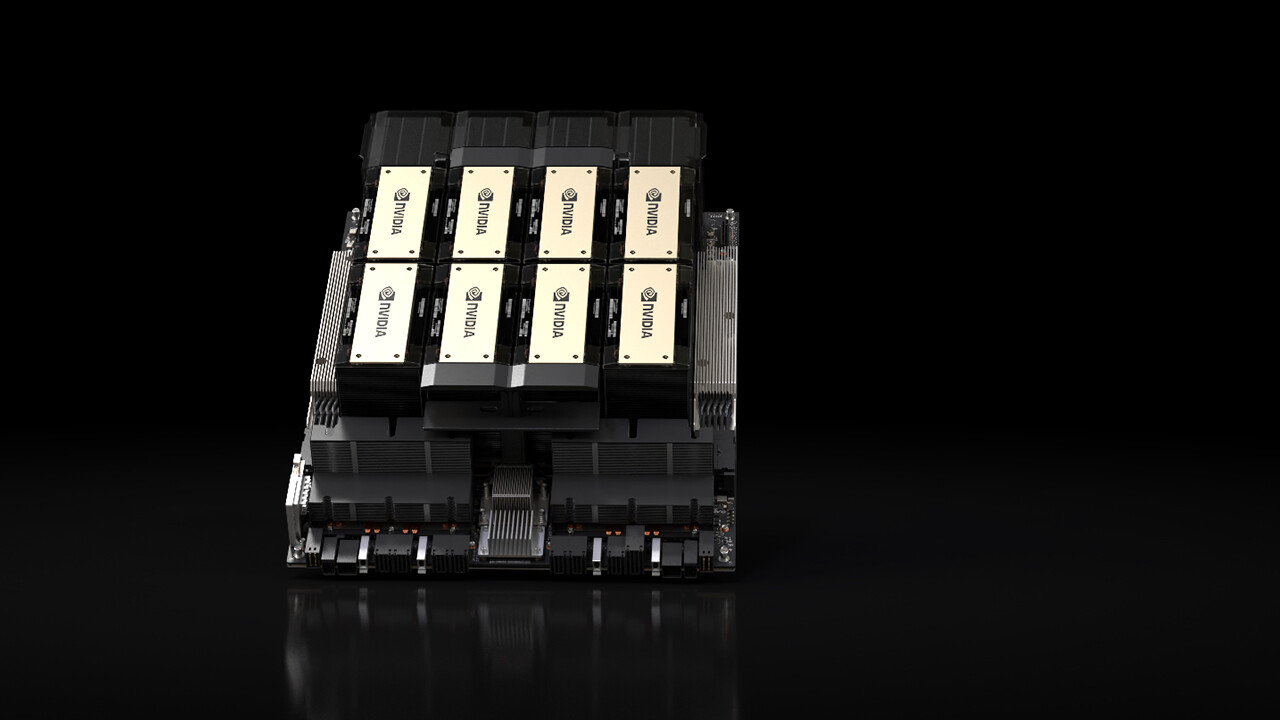Intel Arc B570 10 GB in test: this is what the new entry-level Battlemage graphics card does 118 comments

Five weeks after the Intel Arc B580 12 GB (test), the smaller version Intel Arc B570 10 GB officially hits the market today. Both graphics cards are based on the same Battlemage GPU, but the B570 offers fewer active units and less VRAM. The benchmark test clarifies what Intel’s smallest new graphics card can achieve.
Table of contents 1 Here’s what the new entry-level Battlemage graphics card does Intel Arc B570 vs B580 in the ASRock Arc B570 Challenger OC test in detail Test methodology and test system 2 Test results GPU clock speed under load Performance index without RT at 1920 × 1080 Performance evaluation with RT at 1920 × 1080 Additional analyzes of gaming performance 3 Gaming benchmarks, part 1Black Myth: Wukong COD: Black Ops 6 Dragon Age: The Veilguard Dragon’s Dogma 2 Empire of the Ants F1 24 Final Fantasy XVI 4 Gaming benchmarks, part 2Frostpunk 2 Ghost of Tsushima God of War: Ragnarök Horizon Forbidden West Indiana Jones and the Great Circle Lego: Horizon Adventures MechWarrior 5: Clans 5 gaming benchmarks, part 3Outcast – A satisfying new start Senua’s Saga: Hellblade 2 Silent Hill 2 Stalker 2: Heart of Chornobyl Star Wars Outlaws Warhammer 40k: Space Marine 2 6 Power consumption and coolingPower consumption Volume 7 ConclusionPrice-performance ASRock Challenger OC
Intel Arc B570 versus B580 in the test
There has already been enough talk about the Intel Arc B580 and Intel B570 when the Arc B580 was announced and tested in December, so key technical data and prices should only be compared at this point.
Comparison of key data
Like the B580, the B570 uses the BGM-G21 GPU, but does not have it in the comparison according to the datasheet
10% shader, 6% clock, 17% memory bandwidth and 12% TDP.
On paper, the combination of 10% fewer shaders and 6% less clock speed leads to 16% less computing power, accompanied by 17% less memory bandwidth.
Recommended price in comparison
The MSRP is $30 less before tax ($219-$249), which equates to a 12% price advantage. Intel no longer publishes the recommended price in euros, but when the Arc B570 was already on sale in December, contrary to Intel’s specifications, its price of 260 euros was almost 50 euros lower than the price of the same custom design with the B580 , which is a price advantage of 16 percent corresponded – i.e. perfectly analogous to the power loss indicated on the data sheet.
Intel-Arc Desktop Graphics Specifications Arc B570 Arc B580 Arc A580 Arc A750 Arc A770 Architecture Battlemage (Xe2) Alchemist (Xe) GPU BMG-G21 ACM-G10 Fertigung TSMC Transistor N696 billion 21.7 billion. Die size 272 mm² 406 mm² 32, MXM Units 1st Gen 144, 2nd Gen 160, 2nd Gen 384, 1st Gen 448, 1st Gen 512, 1st Gen GPU Clock 2500 MHz 2670 MHz 2000 MHz 2000 MHz 40 MHz-32 MHz Read. 11.5 TFLOPS 13.7 TFLOPS 12.3 TFLOPS 17.2 TFLOPS 19.7 TFLOPS L2 cache 18 MB (?) 18 MB 8 MB 16 MB Graphics cache 10 GB GDDR6 12 GB GDDR6 8 GB GDDR6 12 GB GDDR6 Storage throughput 19.0 Gbps 16.0 Gbps 17.5 Gbps (16 GB)
16 Gbps (8 GB) Memory interface 160-bit 192-bit 256-bit Memory bandwidth 380 GB/s 456 GB/s 512 GB/s 559.6 GB/s (16 GB)
512 GB/s (8 GB) Connection per slot PCIe 4.0 × 8 PCIe 4.0 × 16 Total card power 150 watts 190 watts 185 watts 225 watts MSRP (before taxes) $219 $249 $179 $289 $349 (16 GB )
$329 (8 GB)
Techtip had the ASRock B570 Challenger OC to test the Intel Arc B570, of which there is no “limited edition” (reference design).
ASRock Arc B570 Challenger OC in details
The ASRock Intel Arc B570 Challenger OC comes with a 100 MHz higher clock speed from the factory (2600 instead of 2500 MHz base clock). ASRock doesn’t provide any information on the card’s total power (TDP), but an 8-pin PCIe power connection is still sufficient.
The Challenger design, ASRock’s entry-level series under Phantom Gaming, Steel Legend and Taichi, relies on a dual-slot cooler with two fans. The PCB is short enough that the rear fan can at least partially circulate air through the heatsink without hindrance.
When it comes to connections, ASRock follows the benchmark specifications without identifying the faster DisplayPort. There’s no BIOS switch on the Challenger, but there is an RGB LED light strip – other parts of the graphics card don’t light up.
Compared to last year’s entry-level ASRock Arc A580 Challenger OC graphics card with a 200-watt TDP (and two 8-pins), this year’s design is even more compact.
 ASRock B570 Challenger vs. A580 Challenger
ASRock B570 Challenger vs. A580 Challenger
The ASRock Arc B580 Steel Legend OC (test) is much more luxurious. Its white triple-fan cooler is larger and draws more attention with full RGB LED lighting (fan + side).
 ASRock B570 Challenger vs B580 Steel Legend Brand mold Intel Arc B580
ASRock B570 Challenger vs B580 Steel Legend Brand mold Intel Arc B580
ASRock Arc B580 limited edition
ASRock Arc B570 Steel Legend
ASRock Intel Challenger OC PCB Length, Width 27.5cm, 11.5cm 29.5cm, 13.0cm 25.0cm, 13.0cm Power Supply 1 × 8-pin 2 × 8-pin 1 × 8-pin Cooler Design Limited Edition, 2.0 Slot 2.6 Slot 2.0 Slot Heatsink 4 Heatpipes
Copper/Aluminum Radiator 3 Heatpipes
Copper/Aluminum Radiator Weight 784g 952g 720g Fan 2 × 85mm (Axial) 3 × 85mm (Axial) 2 × 95mm (Axial) Fan Off (2D) Yes* Yes Yes Cycle
GPU Clock 2670MHz 2800MHz 2600MHz Memory 9 504 MHz 9,500 MHz Memory size 12 GB GDDR6 10 GB GGDR6 Power consumption Standard TDP 190 watts not specified Max. TDP 120 percent 108 percent 108 percent Connections 3× DisplayPort 2.1 (see text)
1× HDMI 2.1 * In practice, the fan does not remain stationary permanently
Test methodology and test system
The test system and test methodology for testing the Intel Arc B570 were the same as those for the B580 in December. Techastuce has already explained in detail why the test results with Intel Arc in this course are different from those in other courses.
The only change compared to the B580 test of December 12 concerns the driver used for the B570, which Intel provided under NDA and now has version number 6256. The B580 was tested with version 6251 in December. There is one exception: in F1 24 the B580 was measured again with the new driver because the old one had a serious bug that cost a lot of performance – this is no longer the case.
The scope of the tests was reduced somewhat in order to be able to create the article between CES 2025 in Las Vegas and what will follow in the coming days: The Intel Arc B570 was only to be in the target resolution FHD and not more in WQHD. compared to the competition, which fits the picture given the expected level of performance and memory reduced to 10 GB: the Arc B580 rarely achieved smoothness in WQHD refresh rates.
Page 1/7 Next page
Test Results Topics: Arc Battlemage Graphics Cards Intel Image Overview Intel Xe

An engineer by training, Alexandre shares his knowledge on GPU performance for gaming and creation.


